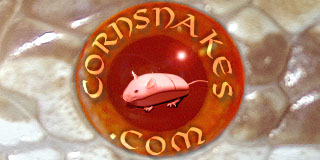actually, no, nobody told me about the dangers of UTHs. I use one under our 20 gal. but it is made for a 5 gal. plastic kritter keeper so it doesn't warm the glass very much. I check it at least daily and it is always only warm to the touch on the inside of the viv. I also make use of thermometers (which I check a few times a day at least) to make sure everyone's comfy and safe.
As far as the plastic tubs go, do you mean the plastic shoebox size? or do they need bigger?
Since day 1 I have fed Angel, and now Nemo, in a separate container. so far the only time Angel has eaten has been when I force fed her last week (and now she's shedding). Nemo won't eat on his own either, but haven't been pushing it because he's so young yet. Have tried f/t pinkie on forceps being wiggled, f/t left in container for an hour, f/t left in container w/ snake overnight, and a live pinkie in container with snake- nothing has worked yet. Could use some advice on this as well!
IMO, I like the shoebox sized rubbermaid container, or the ones that are 11 - 15 qt, with the lids that have locking handles (for the babies under a year old).You want to make sure they cannot push up on the lid & escape. I hear they're quite the escape artists.
I have my some of my smaller sub adults in 10gallong tanks, & the full grown & bigger sub adults are in 20gal (20 long are better).
*One thing about the rubbermaid containers, if you buy them new, I would recommend that you drill/melt the holes, then let the containers sit out for a couple weeks, so the new plastic fumes don't harm your snake.
If Angel is shedding her skin now, she may have been "blue" when you fed her, & sometimes they won't eat in that stage.
I have some hatchlings, that didn't eat until almost 2 weeks after their first shed (at almost 3 weeks old). They finally just got hungry enough to eat. But I only tried once a week, so as to not stress them.
Give it at least 5 days, before you try again.
I am new at this too, but I have learned alot from reading a couple books, & from several people here. There's a LOT of knowledge here, & they're very helpful.

